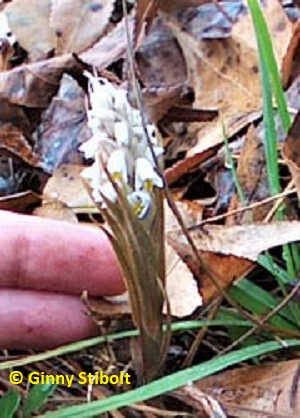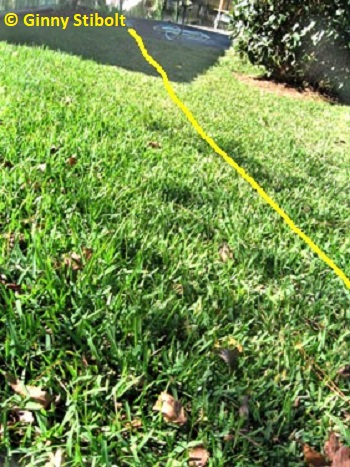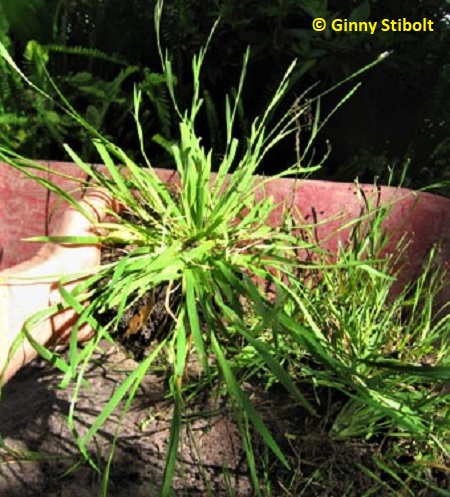|
Adventures of a Transplanted Gardener |
||||
The Lawn Less Mown
|
||||
 |
Lawn Orchids (Zeuxine strateumatica)
These little orchids with their fat, yellow tongues grace our winter lawn. Lawn orchids are not predictable and transplanting or otherwise trying to tame them is probably not a good use of time. I do enjoy them wherever they sprout, knowing that my neighbors who mow their lawns all winter long will never see one. It's a treasure that's available only if you take the time to notice.
This is a native of tropical and subtropical Asia and people have theorized that it was imported by accident with centipede grass, which is also from that region.
 |
Clover (Trifolium repens)
Several patches of extra green clover stood out in contrast to the dormant grass in the lawn this winter. The flowers attracted bees, butterflies, and other insects during the chilly months when the choice of nectar-bearing flowers is small.
One of the strongest ecological objections to a lawn is its lack of diversity. In addition to the bees and butterflies, clover attracts parasitoid wasps, which lay their eggs on pest species such as aphids, scales, and whiteflies—they don't bother humans or their pets. Having a variety of plants in your lawn along with the grasses will increase the diversity of insects and their predators, and this will help keep insect populations under control.
Clover is a legume and is related to beans, peas, etc. One of the traits of legumes is their ability to "fix" nitrogen. While the air contains more than 70% nitrogen gas, most plants have no way to capture it. Legumes form root nodules in a symbiotic relationship with special bacteria that can extract the nitrogen gas and turn it into a useable form for the plant. Clover is widely used as a "green manure" where growers plant it in the winter and then plow it under before planting the main crops. Clover is particularly good for this because it grows well in poor soil during the winter months.
European settlers brought white clover to the New World where it has escaped cultivation. This is an edible plant and you can add its leaves or flowers to your salads, but only if you have not fertilized or poisoned your lawn.
The Lawn Less Mown
 |
<< The yellow line marks the property line between our lawn and our neighbor's. This photo was taken at the end of March and we hadn't mowed our lawn since November, while our neighbor had a service mow, edge, and blow every week or so. At the end of the dormant period there's only a small difference in height—about one or two inches, at most.
While we don't mow at all during the winter, during the growing season we mow less often than most of our neighbors—normally about every ten days to two weeks or so. Sometimes, if we're out of town, it may be a month or more between mowings. We set the lawnmower blade to its highest setting for most of the lawn and keep the blade sharpened. Our less mown lawn is still quite presentable. Also we have enjoyed the company of bluebirds, blue jays, brown thrashers, and many other birds that frequent our un-poisoned lawn throughout the year.
Just think of all the time, money, and energy we've saved and we reduced the air and noise pollution too. Plus we have the benefit of our lawn treasures in the winter. So turn your lawn into one that's less mown all year long and next winter, allow your lawn to go dormant.
Ginny Stibolt is a life-long gardener, a botanist, a naturalist, and a garden writer. You may contact her or read more of her articles posted on her website: www.greengardeningmatters.com.
Copyright Ginny Stibolt


